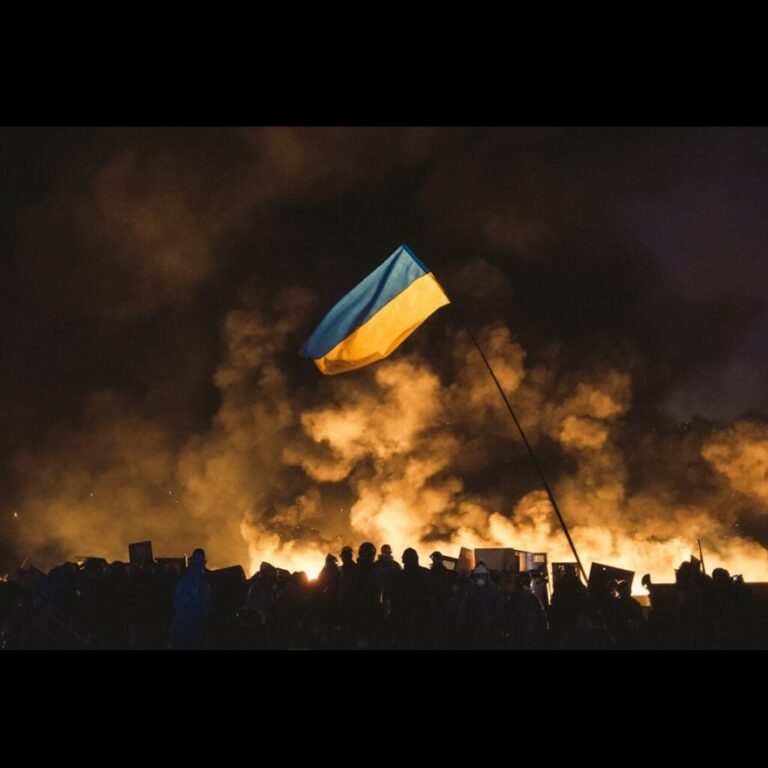
February is fixed in the modern history of Ukraine as a fateful time of change. For so it was in February, 2014, back when the lengthy peaceful protests of the Revolution of Dignity, which had begun in November 2013 as Euromaidan, were turned into mass clashes between activists and security forces. This happened due to attempts by security to disperse activists by force. Officially, the 107 victims of the Revolution of Dignity, who are called the Heavenly Hundred, have been identified. In memory of these fallen, February 20, is commemorated as Heavenly Hundred Heroes Day. It honors the memory of those who rose up against the policy of the former government, fought for freedom, and fought for the democratic future of Ukraine.
Ukrainians have repeatedly marched to Independence Square in Kyiv to defend democracy. In 1990 (in the last autumn of the USSR), the Revolution on Granite took place there, during which Ukrainian youth protested for democratic processes and also protested against the communist government in Ukraine. This revolution changed the vector of development of then Ukraine and became a catalyst for the collapse of the USSR.
On November 21, 2004, the Orange Revolution against election fraud began in the same place, and on the same day, nine years later, the Revolution of Dignity. Each of them became a step in the direction of Ukrainians realising their strength of unity in the struggle for a better future for the state.
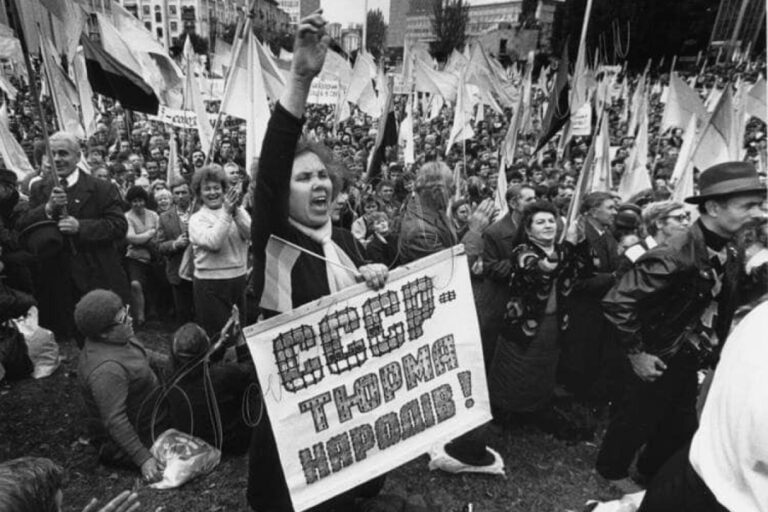
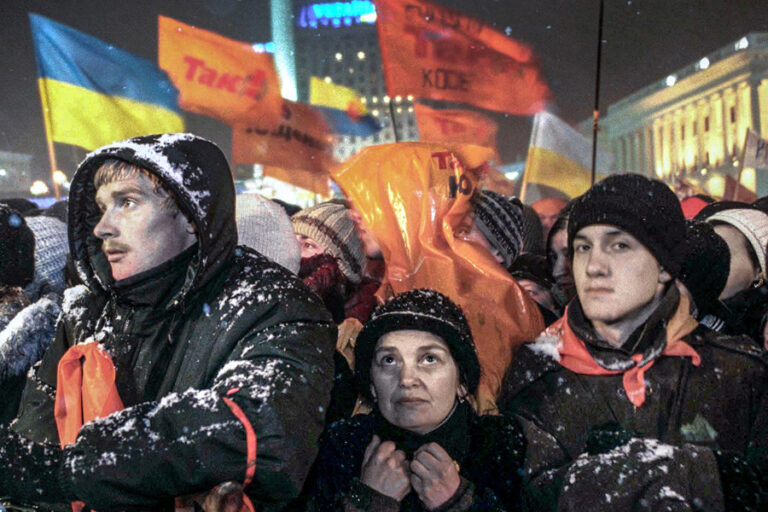
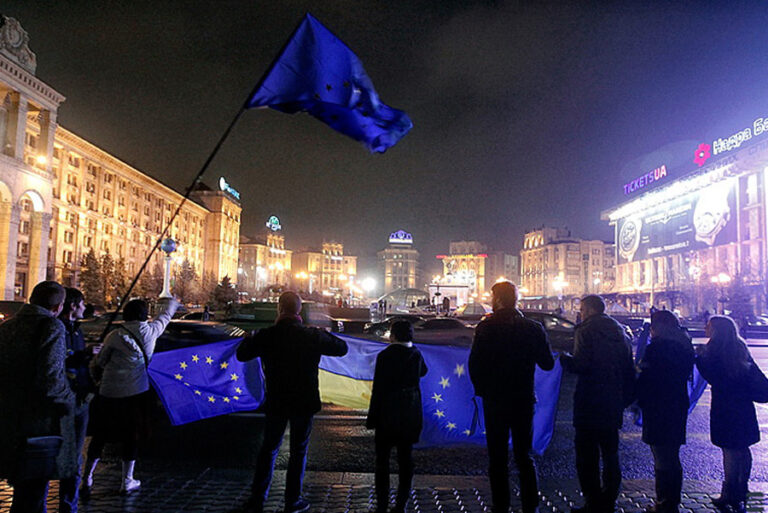
slideshow
On November 21, 2013, one and a half thousand people rallied through social networks. They took to the square to express their protest against pro-Russian President Viktor Yanukovych’s refusal to sign the association agreement between Ukraine and the European Union. At the same time, people in different cities of Ukraine gathered every day and organised events in support of European integration. On the night of November 29-30, about 400 activists, mostly students, remained on the streets of Kyiv. Armed fighters of the former police unit of the Ministry of Internal Affairs of Ukraine called “Berkut” forced people out of the square. They used explosive packages, beating people with batons and stomping them with their feet. The security forces pushed out the Euromaidan activists allegedly to install a New Year’s tree.
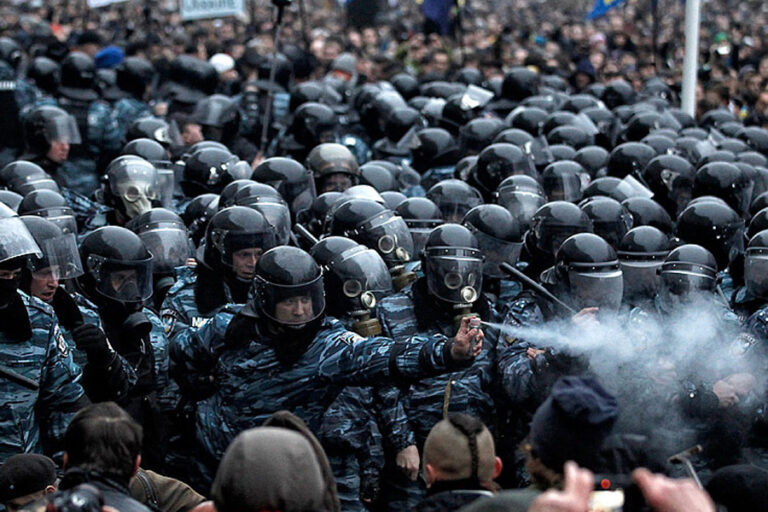
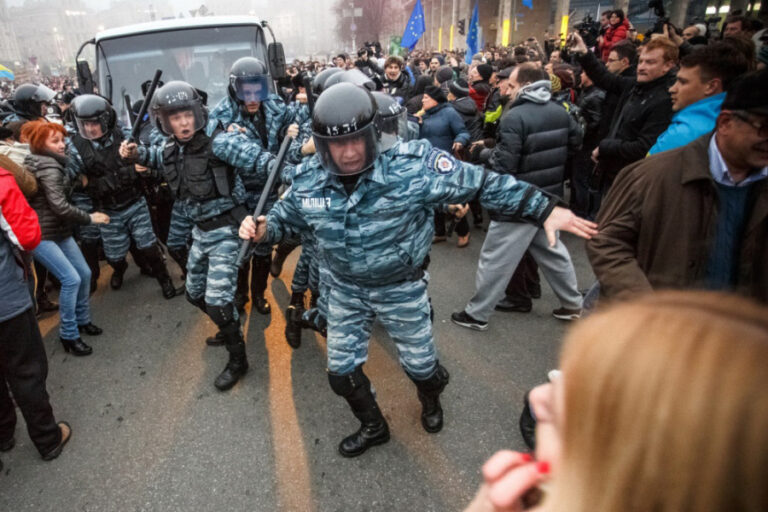
slideshow
Due to the fact that the peaceful protest was violently dispersed, hundreds of thousands of people gathered in the center of Kyiv on December 1, 2013. Citizens were outraged by corruption, usurpation of power, violation of human rights, and the policy of rapprochement with Russia. Due to the European integration slogans, the events were called Euromaidan. This turned into a struggle for the renewal of the state system, the defense of democratic ideas, and the refusal to submit to the pro-Russian regime. The struggle became known as the Revolution of Dignity. In particular, the protesters demanded Ukraine’s course towards European integration, a change of government, early presidential elections, and the punishment of those guilty of beating students.
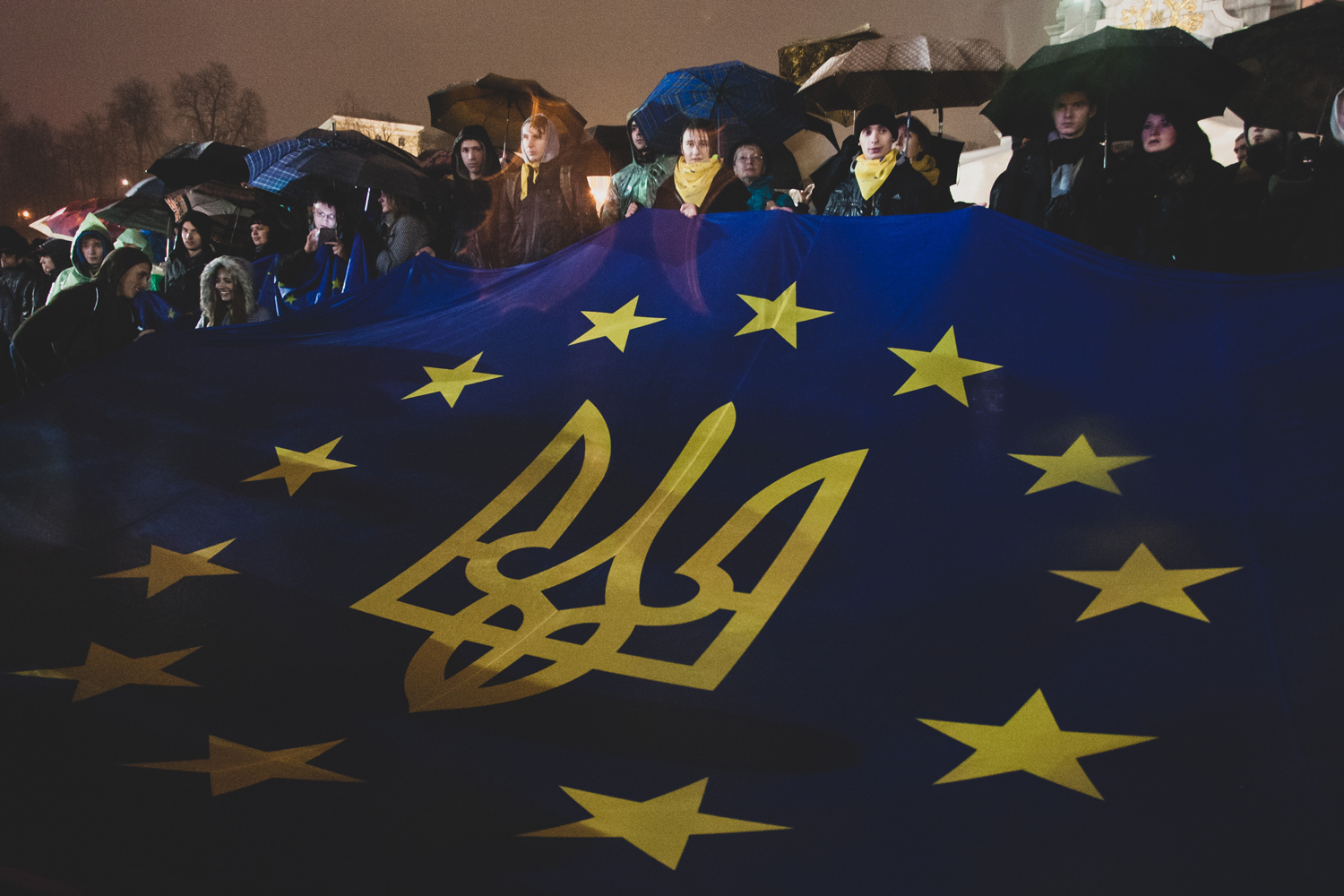
Фото: В'ячеслав Ратинський.
The day after the beating of the students, when the Maidan was actually cleared, people gathered in Kyiv to demand the punishment of the guilty. After that, the stage of the Maidan was installed so that musicians and artists could address the people and support them through music and songs. Euromaidans occupied the building of the Kyiv City State Administration (KMDA) and the House of Trade Unions, where the Headquarters of the National Resistance was located. For the security of the protesters, 15 civil self-defense units were formed called “hundreds”.
Independence Square and nearby streets were filled with protesters. Euromaidan activists began to set up tent cities, surrounded by barricades and several roadblocks. Food was prepared, medical assistance and security were provided, and the frozen were warmed if necessary at these places. The government managed to put up the frame of the New Year tree on Independence Square, allegedly for the sake of which the students had been beaten. The protesters decorated the tree with flags and posters.
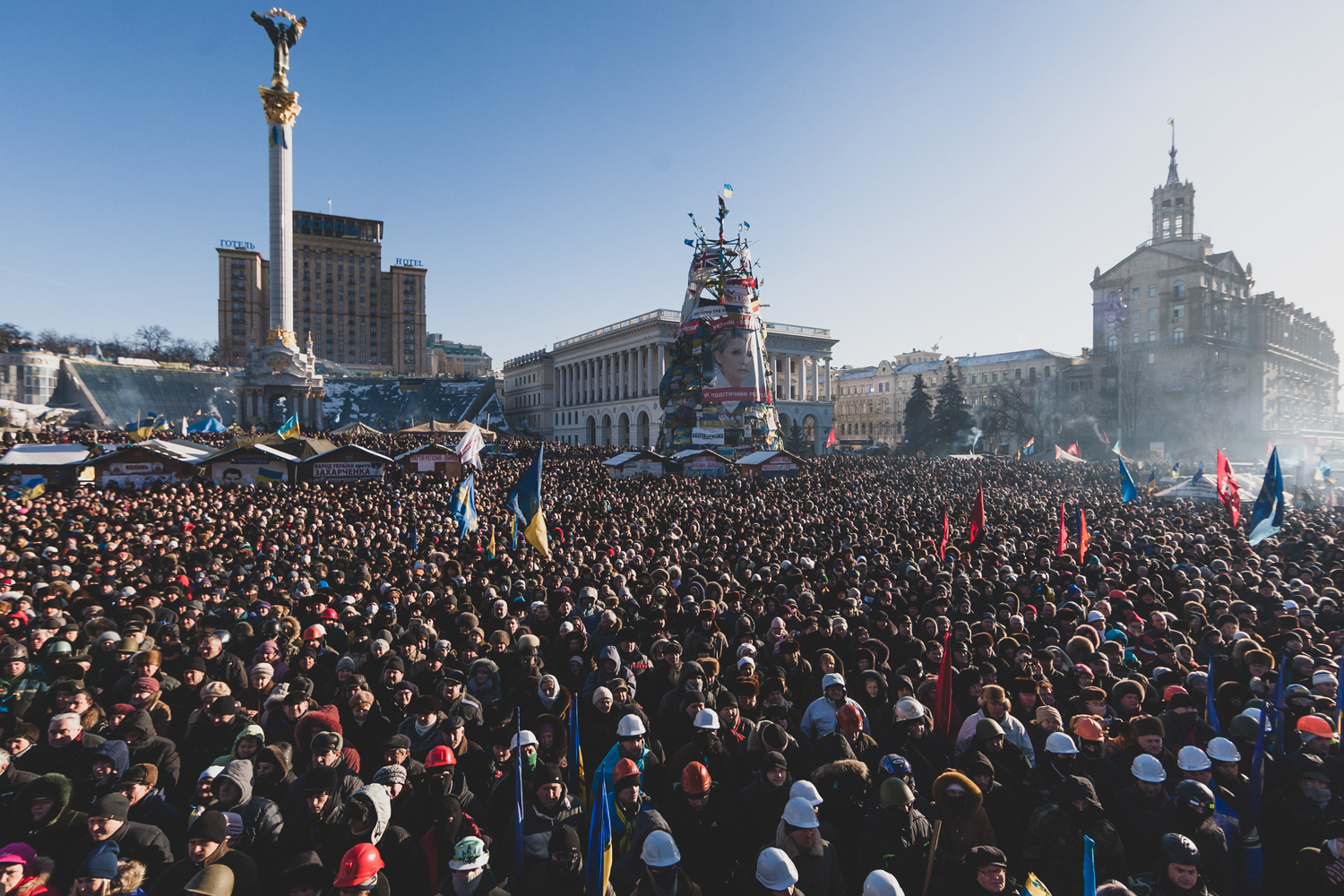
Photo: Vyacheslav Ratynskyi.
Since the beginning of the confrontation, people have been holding peaceful protests to attract the attention of the authorities and convey their dissatisfaction with the country’s foreign policy course. On December 8, 2013, the “March of Millions” took place in Kyiv, a public event with over a million participants. Activists decided to block the Presidential Administration and Government buildings. On the night of December 10-11, “Berkut” and units of internal forces launched an assault to disperse peaceful protesters, but Maidan withstood this.
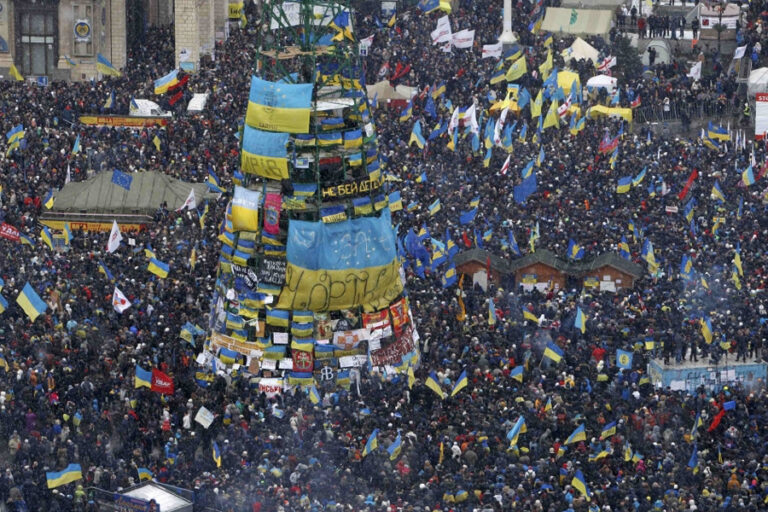
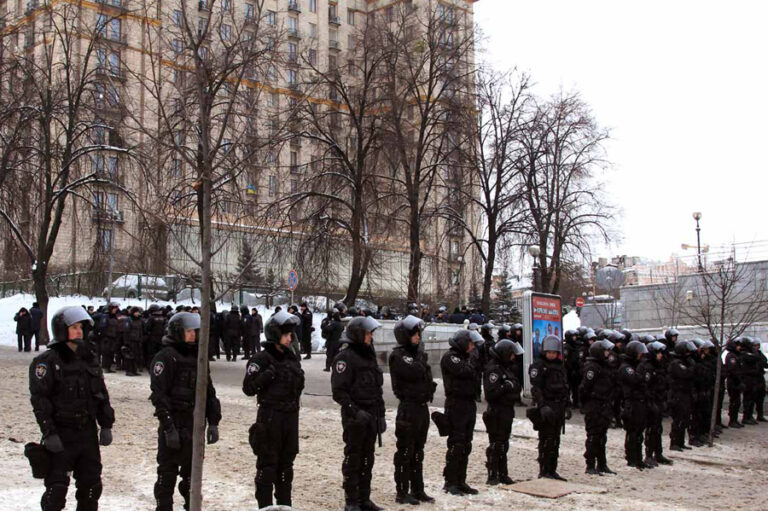
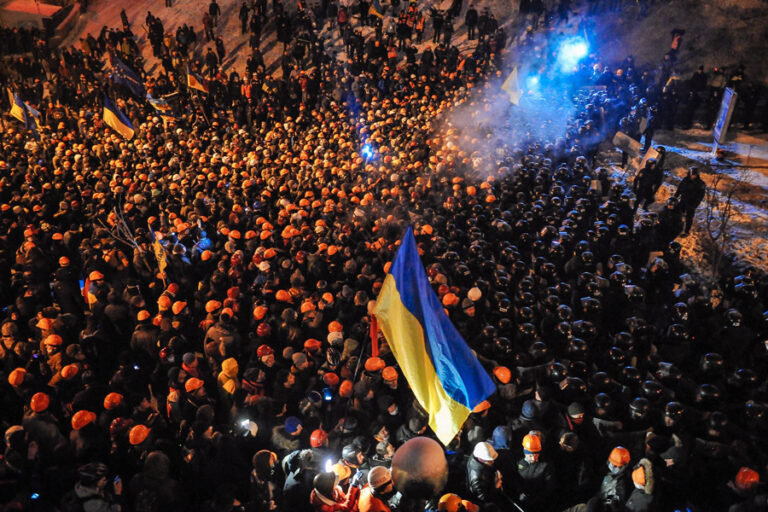
slideshow
The impetus for the escalation of the confrontation was the adoption of “dictatorship laws” by the Verkhovna Rada of Ukraine on January 16, 2014. They limited the rights of citizens and expanded the powers of special officers to punish participants in protest actions. The laws were approved in violation of the regulations and legislative procedure, despite the fact that then President of Ukraine, Viktor Yanukovych, signed them.

On January 19, Euromaidans started a move to prepare an open-ended picket of the Verkhovna Rada of Ukraine. The march met with units of internal troops and special units of “Berkut” on Hrushevsky Street — clashes began that lasted all night. Armed security forces used stun grenades and rubber bullets, as well as a water cannon, against the demonstrators. Euromaidan activists wore construction helmets, and they threw cobblestones and Molotov cocktails at the police.
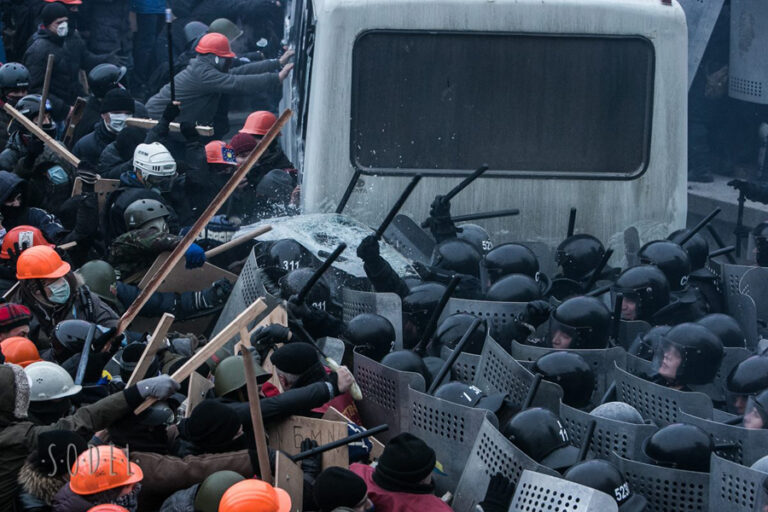
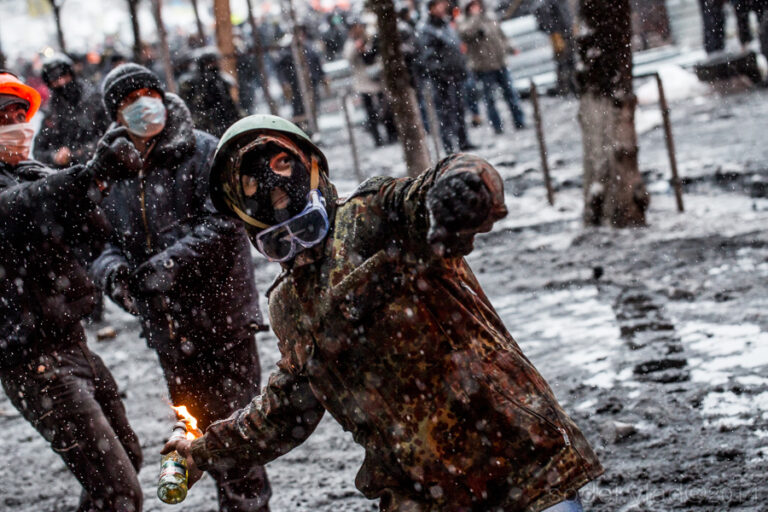
slideshow
On January 22, 2014, another illegal decision was made to extend the powers of the security forces that acted against Euromaidan participants. They were allowed to use light noise and smoke grenades delivered from the Russian Federation. On this day, for the first time during the Revolution of Dignity, two activists – Armenian Serhii Nigoyan and Belarusian Mykhailo Zhiznevskyi – died from gunshot wounds on Hrushevsky Street in Kyiv. Hundreds of Euromaidans were injured by rubber bullets, debris, and chemical burns. The security forces treated the participants of the protest brutally – detained and tortured them illegally.



At the end of January, the uprising spread to other regions of Ukraine. Protesters occupied administrative buildings, and they removed pro-Russian heads of state administrations from their positions. These protests became the people’s reaction to the escalation of opposition to Euromaidan after the adoption of “dictatorial laws” and clashes between security forces and protesters on Hrushevsky Street in Kyiv.
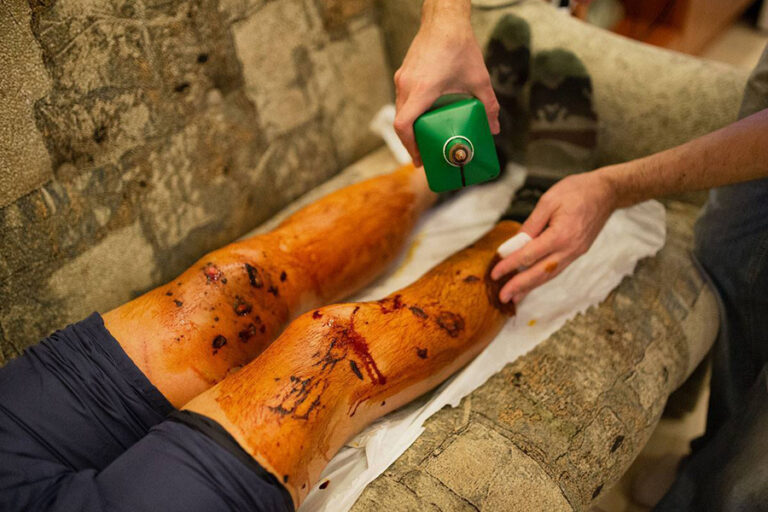
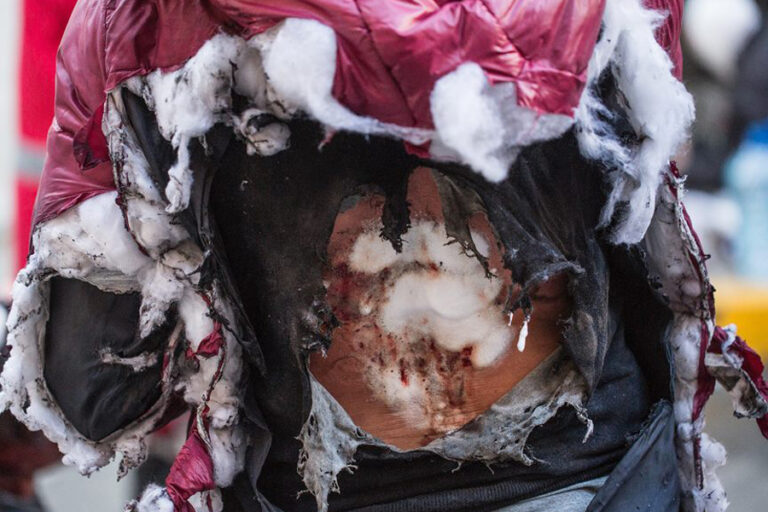
slideshow
Negotiations at the end of January between the government and the opposition ended with the opposition leaders evaluating the government’s actions as a delay. They decided to end the negotiation process with the current government and continue the peaceful protest on the Maidan.
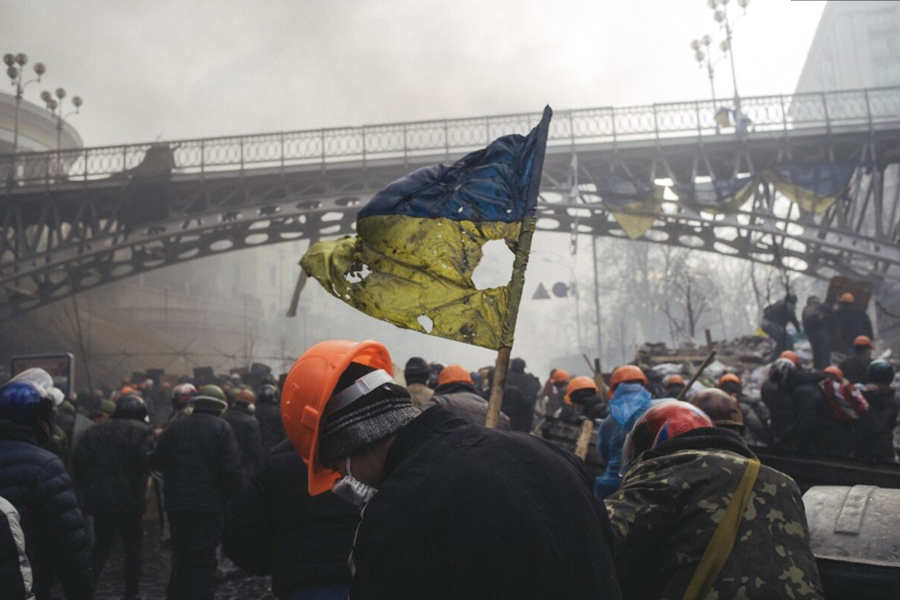
Photo: Maxim Dondyuk.
On February 18, 2014, activists marched to the Verkhovna Rada of Ukraine, where deputies were supposed to consider changes to the Constitution of Ukraine. Activists called on the parliament to return the Constitution of 2004, according to which the political system of Ukraine was supposed to become parliamentary-presidential again, which reduced the possibilities for usurpation of power. This Constitution was abolished after the victory of Viktor Yanukovych in the 2010 elections. The peaceful offensive turned into mass clashes between the Euromaidans and security forces. The Berkut police special unit dispersed the demonstrators on the approaches to the parliament and began an assault on the Maidan. On the side of the police, “the titushky” mercenaries who used physical force and took part in mass skirmishes against activists were active. On this day, more than 20 Euromaidans were killed with firearms.
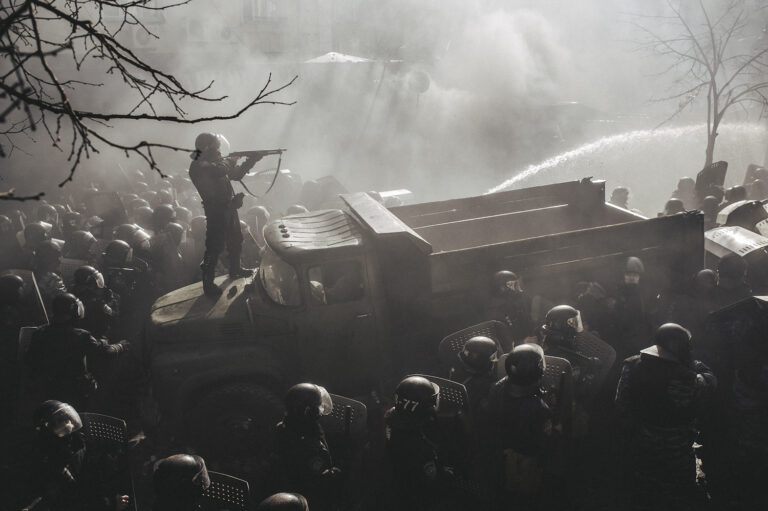
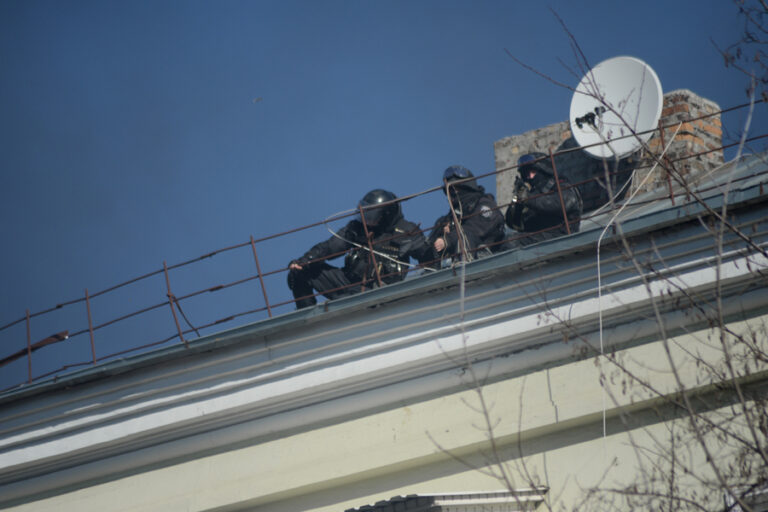
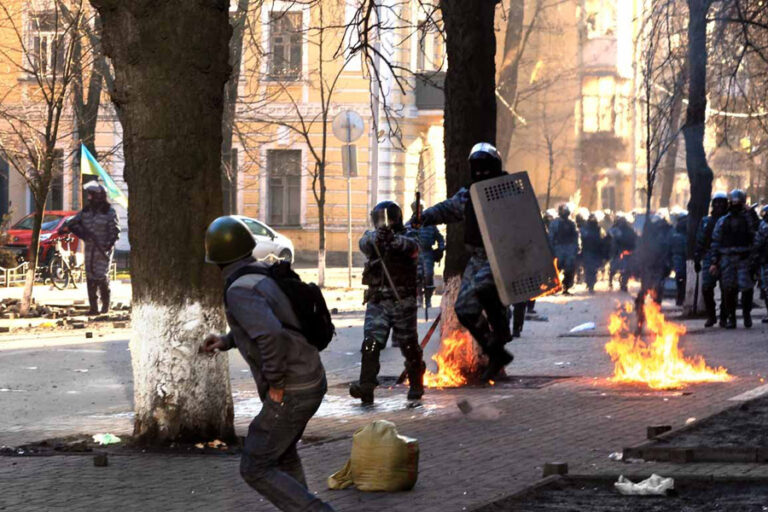
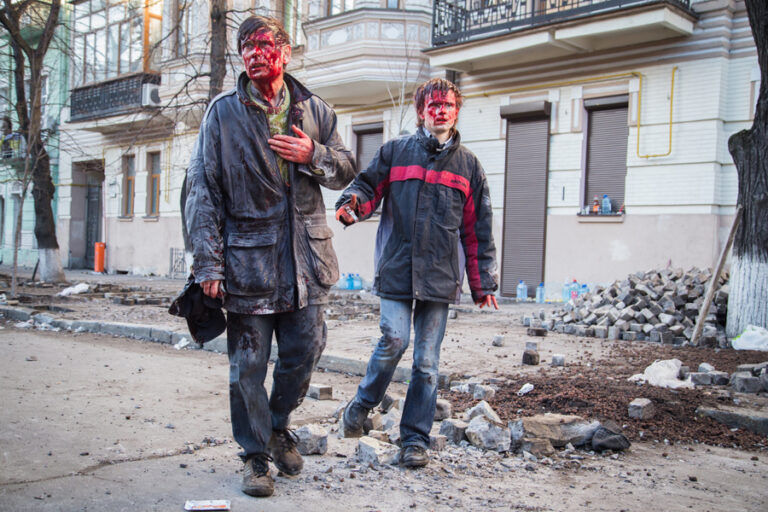
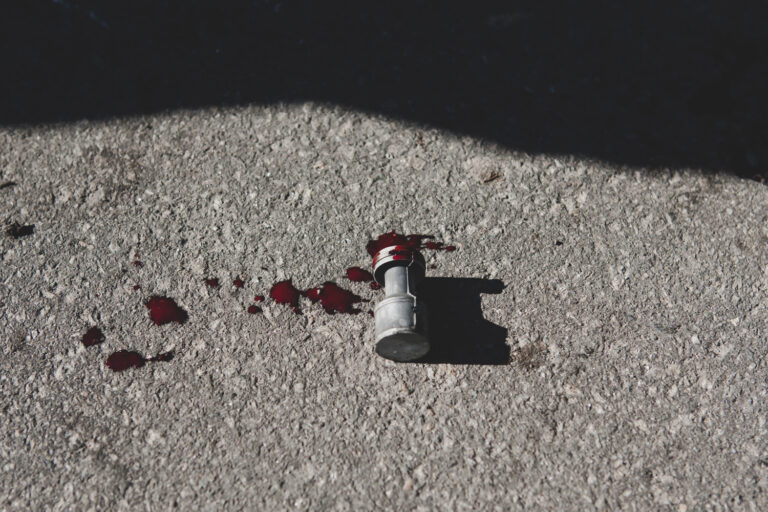
slideshow
The events of February 20, 2014, on Instytutska Street in Kyiv entered the modern history of Ukraine as “Bloody Thursday”. On this day, snipers killed 48 Euromaidans. On the same day in 2014, Russia began the occupation of Crimea, and in the spring they invaded Eastern Ukraine. Eight years later, in 2022, the Russian Federation launched a full-scale invasion.
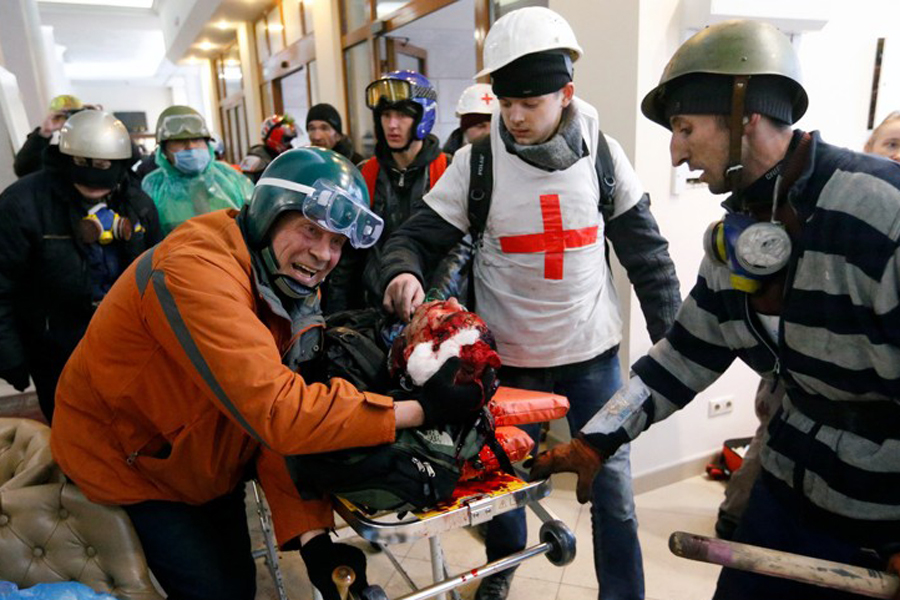
Photo: Vlad Musienko.
Viktor Yanukovych tried to conclude a “peace agreement” with the protesters, in which he promised, in particular, to investigate the crimes committed. On February 21, 2014, the parliament with an absolute majority of votes approved the law according to which the parliamentary-presidential republic was restored in Ukraine. However, the activists considered the agreement with the current authorities to be “blurring the eyes”, because being the organiser of violent crackdowns and shootings this authority proved its criminal nature.
On the night of February 21-22, 2014, Viktor Yanukovych fled Kyiv with his entourage. First, he went to Kharkiv, where, with the support of Russia, he tried to organise a congress to separate the eastern regions from Ukraine. However, the plan failed. Yanukovych and most members of his government fled to Russia.

During this transitional period, the Verkhovna Rada of Ukraine, the Presidential Administration, the Cabinet of Ministers, and the Ministry of Internal Affairs were controlled and guarded by Maidan participants. Deputies adopted a resolution on the self-removal of the President of Ukraine from the exercise of constitutional powers and scheduled extraordinary elections for May 25, 2014. Until that time, the duties of the president were performed by the speaker of the parliament Oleksandr Turchynov.
The investigations regarding those responsible for the crimes on the Maidan have not yet been completed, because sometimes the trials last for years. The first murders on the Maidan remain unsolved, including the murders of activists Serhiy Nigoyan, Mykhailo Zhiznevskyi, and Roman Senyk in January 2014.


This history (of the great Russian-Ukrainian war. — ed.) is not a few months old. It is more than 8 years old. The nation had just passed the Revolution of Dignity then. And it was after 2014 that the spirit of resistance and resilience was revived in Ukraine. The war did not start on February 24, 2022. It started in February 2014 after the Maidan”, — Nolan Peterson, the American journalist and military veteran who has been living in Ukraine since the summer of 2014.
The main geopolitical consequence of the Revolution of Dignity was the beginning of Ukraine’s exit from Russia’s zone of influence in the economic and political spheres and a decrease in dependence in the cultural aspect. The non-aligned status of Ukraine was canceled, which meant that it was not included in the international structures of collective security and defense.
For three months thousands of Ukrainians lived on Independence Square in Kyiv. The participants of the Revolution of Dignity created volunteer organisations and charitable foundations. For example, volunteers of the Euromaidan SOS public initiative provided round-the-clock legal and other assistance to protesters who were beaten, illegally arrested, subjected to torture, accused in fabricated criminal and administrative cases, as well as those whose relatives disappeared or died. During the Revolution of Dignity, the Zgraya volunteer group was also created. It worked with the military in eastern Ukraine in 2014-2015, and after the full-scale invasion, it helps not only the military, but also the civilian population.
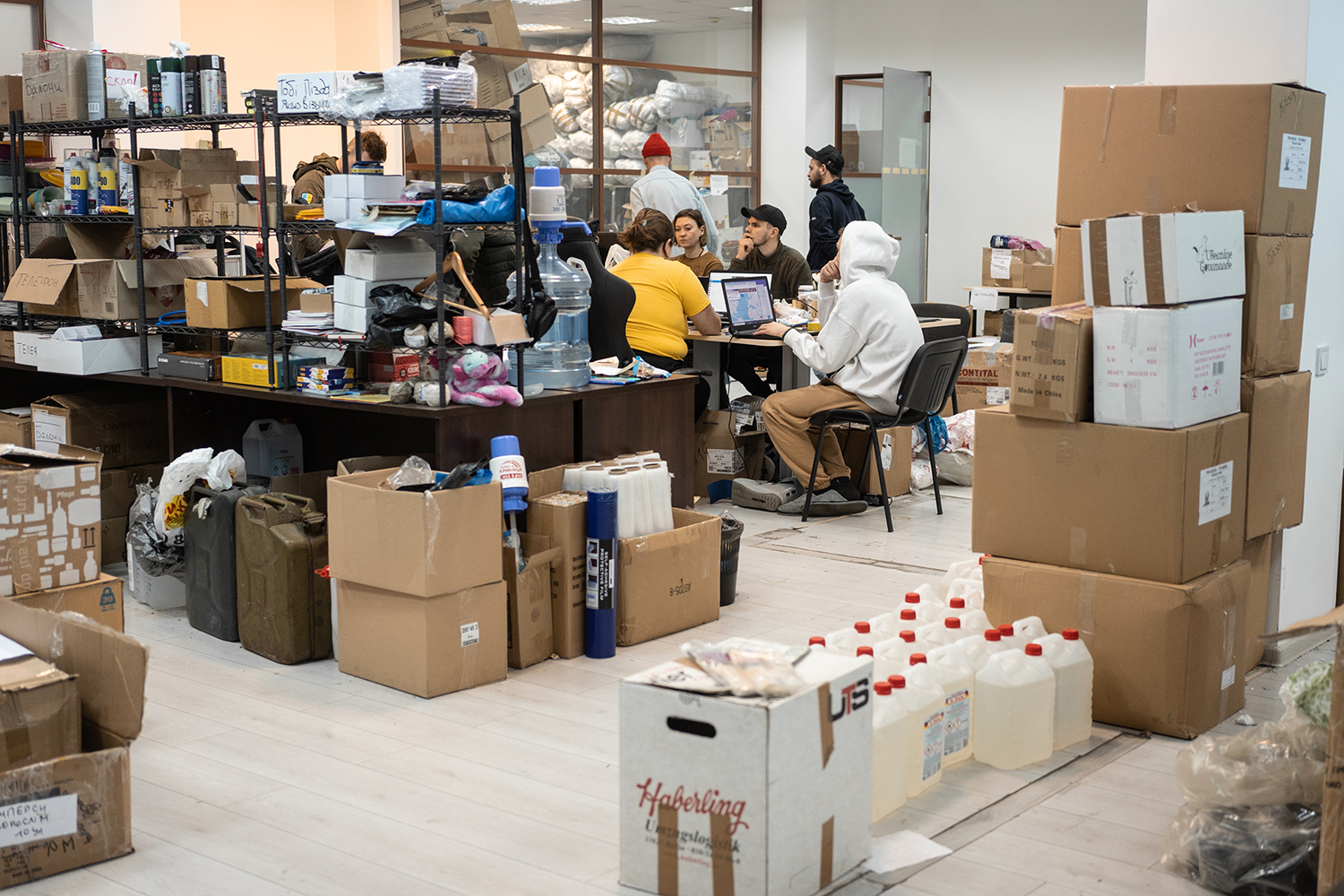
Фото: Сергій Коровайний.
To preserve the memory of these events and their heroes, the National Museum of the Revolution of Dignity was created. German architects won the museum building design competition. Their design was given to Ukraine free of charge. The construction of the museum building was planned to begin in the fall of 2022. However, due to the full-scale invasion of the Russian Federation, it has not yet started. So far, the museum has permanent exhibitions in other spaces. It holds cultural and educational activities in Ukraine and abroad.
During the Revolution of Dignity, there were many artists on the Maidan. Musicians and artists united in the Artistic Hundred Organisation. Members of the Union of Free Artists set up an exhibition square in the middle of Khreschatyk. They called it the Artistic Barbican. Artists painted helmets of protestants and shields of civil defense units. Piano Extremist became one of the musical symbols of the Revolution of Dignity. Dressed in a balaclava and a bulletproof vest, he played an instrumental piece by Ludovico Einaudi for the first time in 2014 at Khreschatyk. In the spring of the same year, Piano Extremist wrote his first composition dedicated to the Heavenly Hundred.
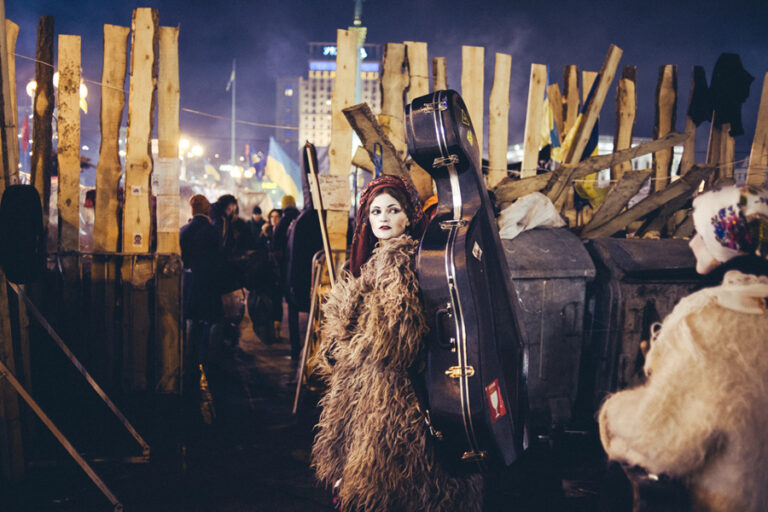
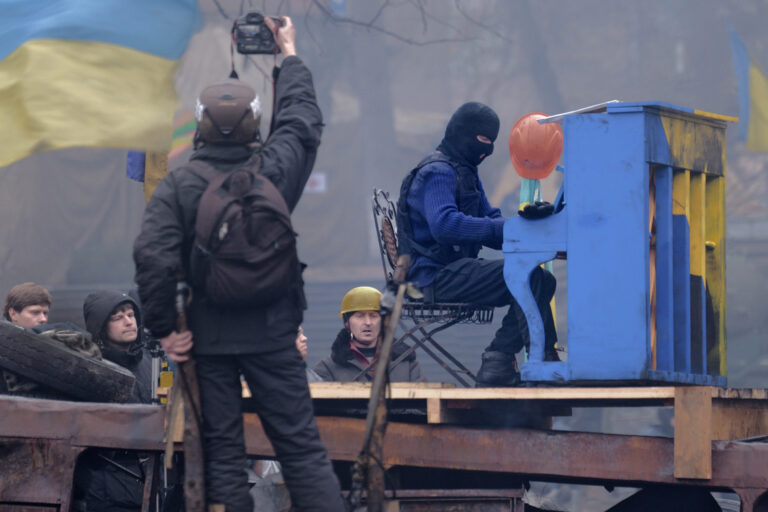
slideshow
The Revolution of Dignity became a transformative phenomenon for Ukraine. It helped preserve its independence from imperial Russia, getting rid of Viktor Yanukovych and his entourage. It returned the country’s European development vector. The struggle of Ukrainians contributed to the process of decommunization. The development of civil society strongly manifested itself during Euromaidan events. This development later grew into numerous public initiatives, the volunteer movement, and the subsequent transformation of the post-totalitarian society into the democratic one.

The events of the 2013-2014 crisis in Ukraine became not only historical events, but they also explain a lot about the current Russian-Ukrainian war and its preconditions. The Russian authorities, considered the collapse of the USSR a geopolitical catastrophe. They could not tolerate the existence of a truly independent and strong Ukraine. When it became clear that the Revolution of Dignity was winning, Russia started a war against Ukraine using hybrid methods. Russian propaganda tried all these years to stain the events of Euromaidan and its participants. For so it is the participants of the Revolution of Dignity who formed the backbone that protects Ukraine at the front and develops civil society.

The Revolution of Dignity became the topic for films:
– All things Ablaze by Oleksandr Techymskyi, Oleksii Sodunov and Dmytro Stoykov
– Winter on Fire: Ukraine’s Fight for Freedom by Yevgen Afineevskyi
– Euromaidan: Rough Cut by Roman Bondarchuk, Volodymyr Tykhyi, Andriy Lytvynenko and others
Literature about the Revolution of Dignity
– Ukrainian Maidan, the Russian war. Chronicles and analysis of the Revolution of Dignity by Mykahailo Vynnytskyi
– Maidan. An untold history by Sonya Koshkina
– Maidan: Events – Testimonies – Mentality by Oleksandr Strazhnyi
– Maidan. (R)Evolution of Spirit by Antin Mukharskyi
– Maidan. Testimonies. Kyiv, 2013-2014 by Leonid Finberg

